How to spray tomatoes with fertilizer from milk and iodine, is it possible
It is important for all gardeners and gardeners to obtain a large and high-quality harvest, while not using chemical fertilizers and stimulants. In the case of growing tomatoes, spraying tomatoes with iodine and milk is becoming increasingly popular. Of particular importance is the fact that such a method in a small dosage is harmless to both plants and humans.
The value of iodine for tomatoes
By itself, an element such as iodine for tomato seedlings does not play any role for growth and development. If it is not enough or not at all, the plant will not notice it. So why is it needed? The element has a stimulating effect, since it improves the absorption and assimilation of nutrients, helps to activate the defenses of the plant in the fight against diseases.
There are several ways in which iodine can be supplied to vegetables. Plants get it from the ground or with applied fertilizers - root or foliar treatments. It should be borne in mind that most often the presence or absence of this element is unknown, since it is not specifically added.
If we consider the soils depending on the level of saturation with this element, then we can distinguish rich and poor soils. The rich include:
- peat tundra;
- red soils and chernozems;
- chestnut soils.
The poor are as follows:
- gray soils and forest soils;
- podzolic;
- salt licks;
- burozems.
Before artificially saturating plants with top dressing, one should take into account the soil in which they grow, the fertilizers applied. Iodine-containing are: manure, peat, peat and wood ash, phosphate rock. In the presence of suitable soil or top dressing, spraying tomatoes with milk with iodine is performed only in case of problems that may suggest the need for action.

These are:
- a decrease in the usual level of yield or a significant decrease in the size of the fruits while maintaining the usual care;
- late fruiting;
- low immunity of seedlings: their poor growth, disease, death;
- the appearance of fungal diseases;
- manifestation of iodine deficiency: weak thin stems, pale leaves.
Such fertilizer for tomatoes how iodine feeding will help solve the difficulties that have arisen.
The effect of iodine on seedlings
Most often, the element is used as a good helper only for tomato seedlings before the ovaries appear - later its introduction is not recommended. During this period, it helps the vegetable crop to gain nutrients. By itself, this substance is not a top dressing. This is a powerful antiseptic, the use of which helps to cope with rot, fungal diseases, and disinfect seeds. Prevention of viral diseases is of particular importance.
Vegetable milk
The use of milk in combination with tomatoes has only positive effects. First, it is an environmentally friendly product. Secondly, it is saturated with many useful substances that are absorbed by the vegetable during growth. Thirdly, the composition of milk contains amino acids that activate plant growth.
All this contributes to the improvement of metabolic processes, better absorption of nutrients. Therefore, the greatest effect in the case of tomatoes can be obtained using milk solutions during the growth and formation of fruits.
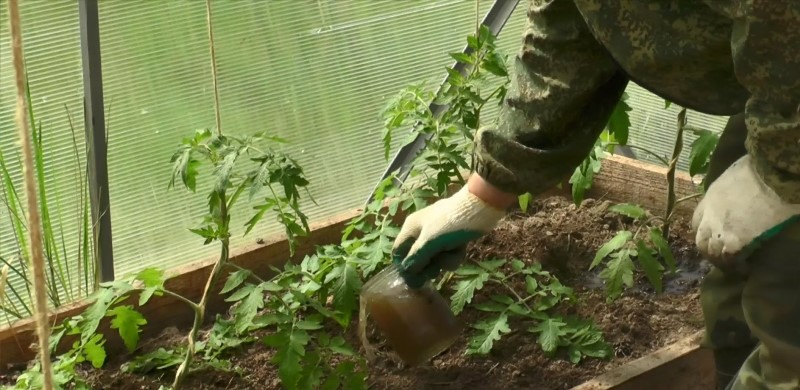
Top dressing with a solution can be both root and foliar - each of them will have its own effect: root - to saturate the soil with useful microelements, and foliar - to protect from pests.
Raw milk is most suitable for these purposes, but if there is no way to get it, a pasteurized product or curdled milk is also used. Milk whey is also often used, which is formed when souring. The most effective treatment will be with a specially prepared solution, which has a complex effect.
Milk with iodine
A wonderful foliar feeding is the processing of tomatoes with milk with iodine. This method additionally helps to protect them from pests, since almost all insects cannot tolerate lactose and milk sugar. After the spraying procedure, a film forms on the surface of the leaves, which does not allow pathogens of many diseases to penetrate inside. This method is especially useful in the fight against fungal infections.
The mixture is prepared as follows: 4 liters of water and 1 liter of milk are taken, to which 15 drops of iodine are added. We will talk further about how to water tomatoes with iodine.
Application features
Grouting can be done for tomatoes in a greenhouse or growing outdoors. But at the same time, some conditions must be observed:
- there should be no direct sunlight;
- seedlings are watered in the morning or evening;
- the weather must be dry and calm, otherwise the mixture will drain from the leaves;
- the best air temperature for this procedure is about 18 degrees.
This is important, since treatment with iodine solution in hot or sunny weather, as well as the wrong dosage, can lead to burns on the surface of the leaves.
Ideally, the plant should "envelop" a cloud of the mixture and be evenly distributed throughout the seedling, for which the tomato is sprayed with iodine using a fine spray bottle.
Compliance with the processing time is also important. For the first time, it is produced 2 weeks after disembarkation. The best period is July, since it is at this time that active growth occurs. Then the procedure is repeated at intervals of 14 days if the vegetable does not bother. With the emergence of problems, actions will be different.
You can feed the seedlings even if there are no problems, but the plants grow in "poor" soil. This will help add nutrients and prevent disease.
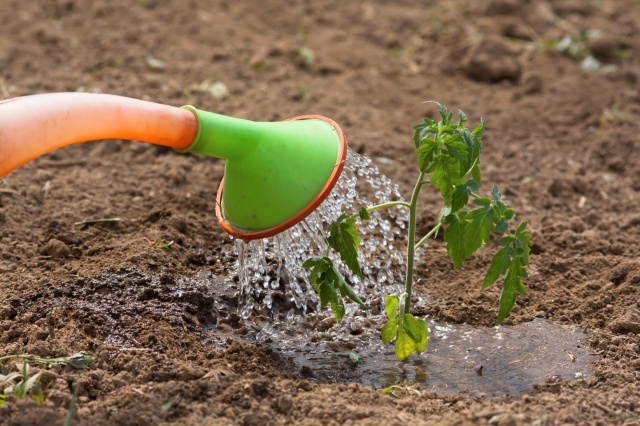
They do it as follows:
- For the first time, you should feed the tomatoes with a solution at the seedling level. To do this, take 1 liter of milk and 15 drops of iodine solution in a bucket of water. You need to spray the seedlings completely.
- Then feeding the tomatoes with iodine is done after planting in the ground. You need to feed it with a mixture of 5 liters of water, 1 liter of milk and 10 drops of iodine solution. The bushes are processed before flowering. You can repeat the procedure after 3 days.
- During fruiting, tomato seedlings are treated, if necessary, every 2 weeks with serum with iodine.
Disease Fighting Benefits: Late Blight
This iodide method is especially effective in the fight against fungal diseases.This will help with the spread of "brown spot", "gray mold", "tobacco mosaic virus", fusarium wilting.
A particularly common problem is a fungal infection called "late blight": when the disease spreads and measures are delayed, up to 70% of the total crop can die.
The causative agent spreads by spores, and the signs of the onset of the disease are:
- dark spots on the back of the leaves;
- leaves turn brown and dry up;
- the fruits gradually turn black.
Infected plant parts are almost impossible to save. They are removed, removed and burned, or the whole plant is disposed of in the same way. Fire helps prevent the spread of spores. Calcareous soils and high humidity are favorable conditions for the development of this disease, so the greenhouse must be ventilated as often as possible. Weak plants that lack nutrients are at greatest risk of infection.
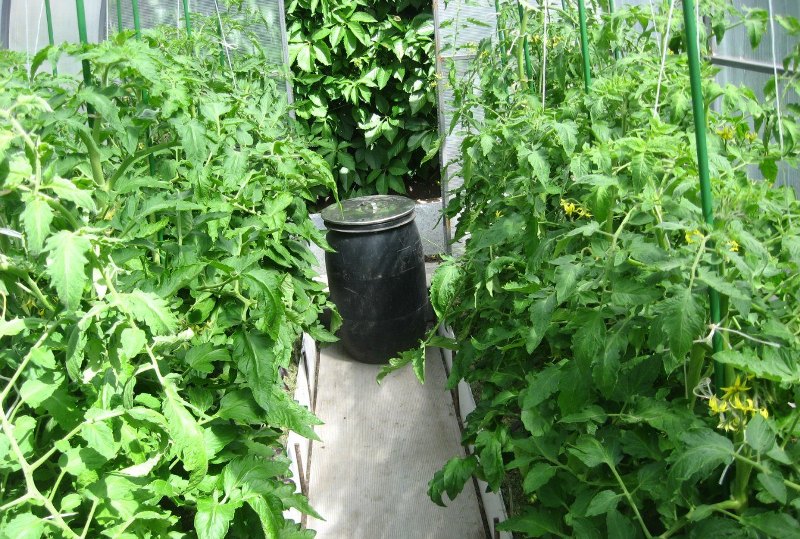
All control methods are based on the disinfection of the environment. The principle of spraying for tomato seedlings and adult plants will be approximately the same. Since iodine is an antiseptic, and milk has an acidic environment, which is detrimental to phytophthora, this method is perfect.
To stop the spread of phytophthora, spraying of seedlings should be carried out regularly, preferably every day. After that, do not water the vegetables.
Mixtures are used different:
- water and skim milk whey in a 1: 1 ratio;
- water, milk and iodine in the following proportion - 1 bucket / 1 liter / 15 drops;
- 0.5 liters of milk and 10 drops of iodine.
They can be alternated with other methods that do not contain iodine as fertilizer. This will be even more effective than using only one method. Thus, in order to get a good harvest, it is not necessary to spend a lot of money, because you can get by with inexpensive improvised methods.
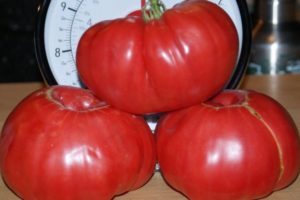
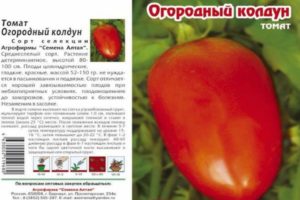




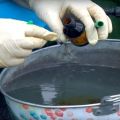

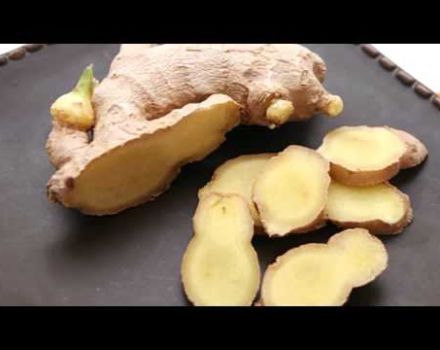

This is a good fertilizer for tomatoes, but remember to take into account the composition of the soil. I would recommend using the "BioGrow", It is suitable for absolutely any territory.